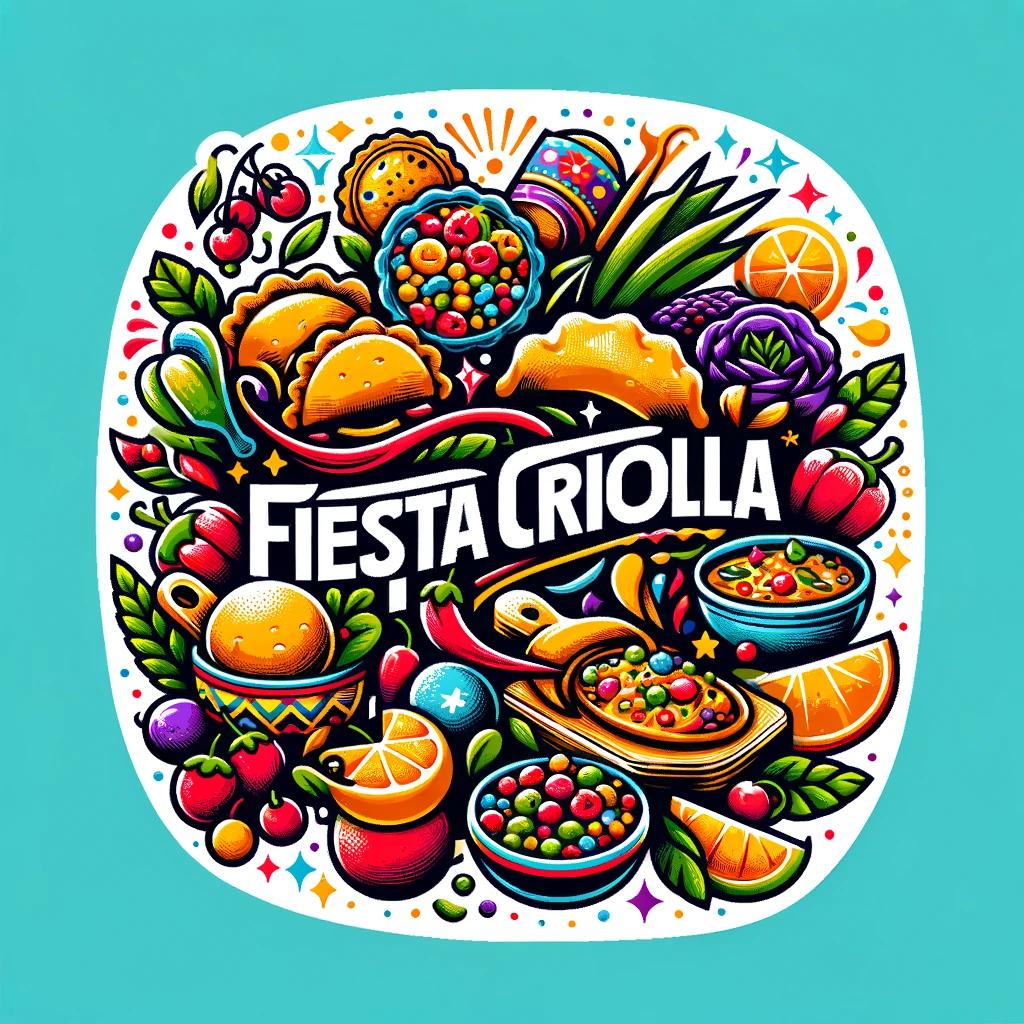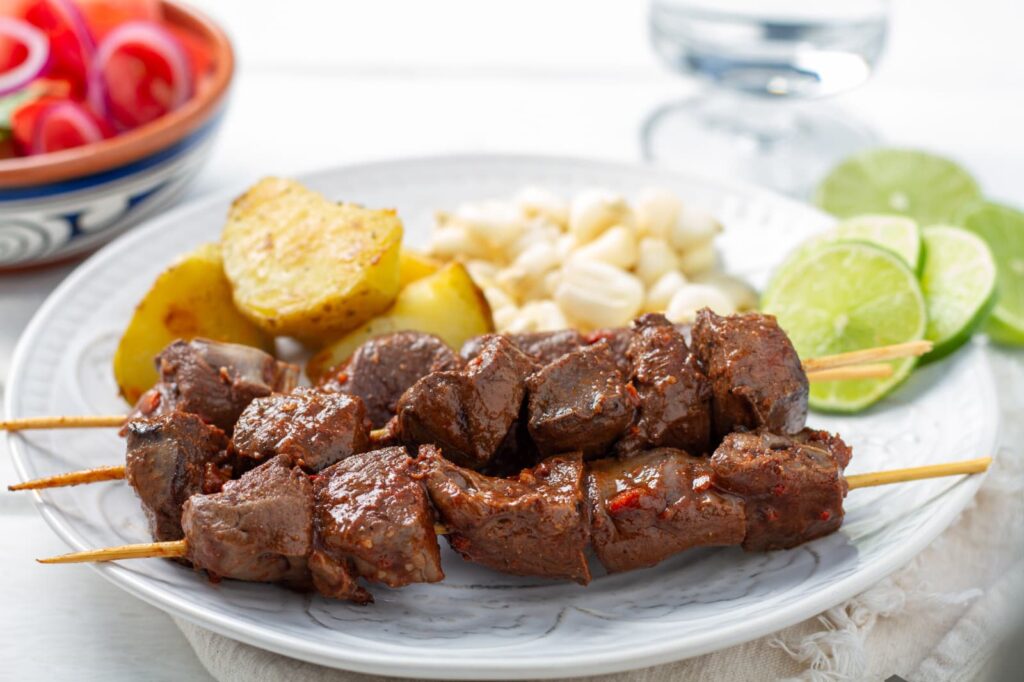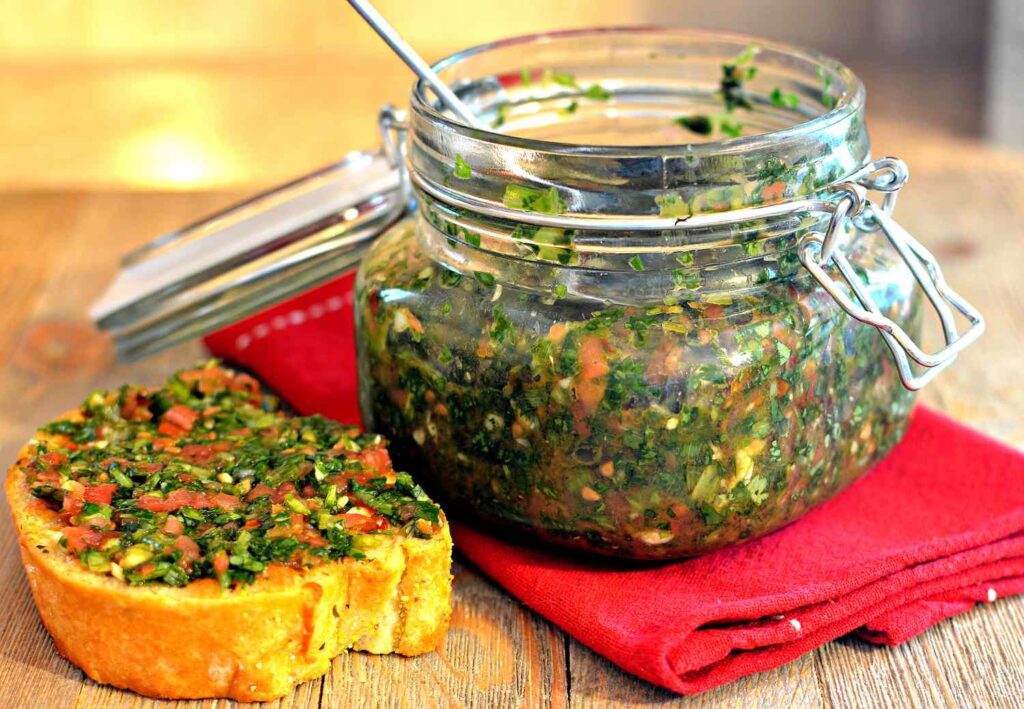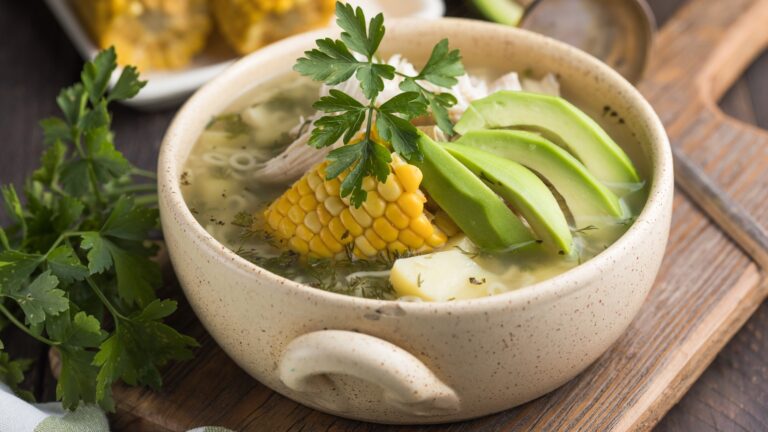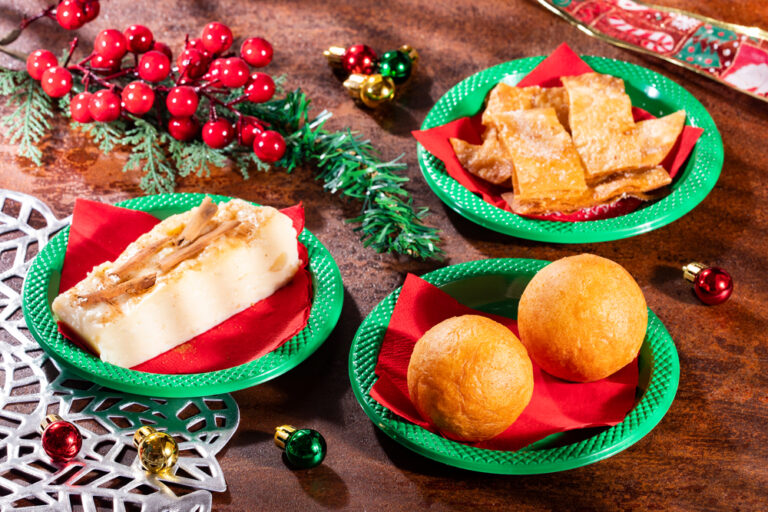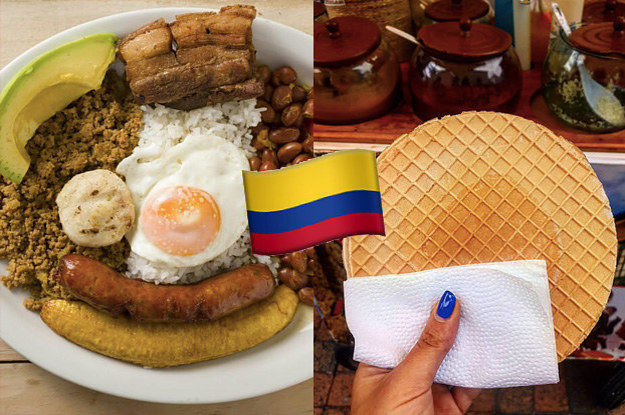Imagine strolling through the vibrant streets of Santiago, the air filled with enticing aromas that pull you towards the nearest street vendor. That’s where the magic of Chilean street food really comes alive. It’s not just about filling your belly; it’s an explosion of flavors that tells a story of tradition and innovation.
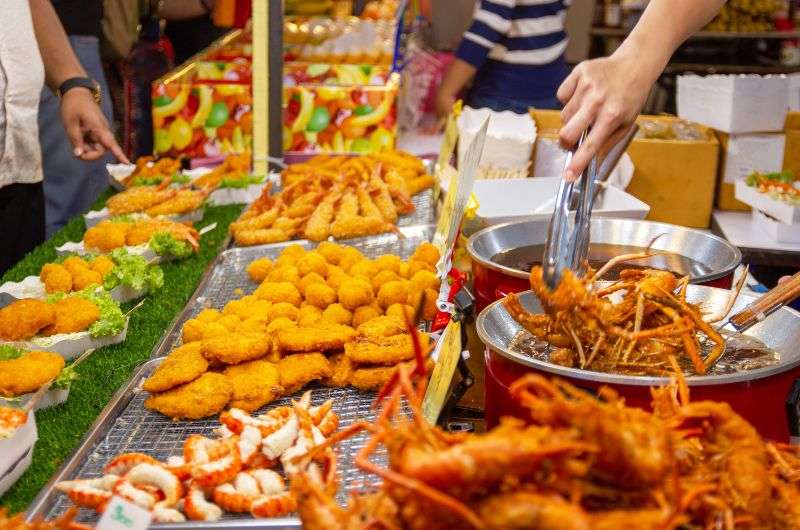
From the iconic completo to sizzling anticuchos, each bite is a conversation starter. In this journey, we’ll explore these mouth-watering Traditional Chilean Street Food delights, learn why they’re cherished by locals, and even discover how you can recreate them at home. Ready to dive into a world of bold tastes and vibrant street culture? Let’s get started!

The Beauty of Chilean Street Food
Dive into the colorful world of Chilean street food, where every dish is more than just a meal—it’s a vibrant spectacle for the senses. Picture this: fresh, zesty ceviche served in a quaint paper cone, a warm empanada whose flaky crust breaks perfectly under the pressure of your bite, revealing a hearty, spiced filling.
And who could forget the humble yet beloved sopaipillas with pebre, a dynamic duo of sweet and spicy that dances on your taste buds? This culinary adventure showcases Chile’s rich cultural tapestry, painted with the flavors of its indigenous and European influences. Indulge in these street-side treats and experience the true beauty of Chilean gastronomy.
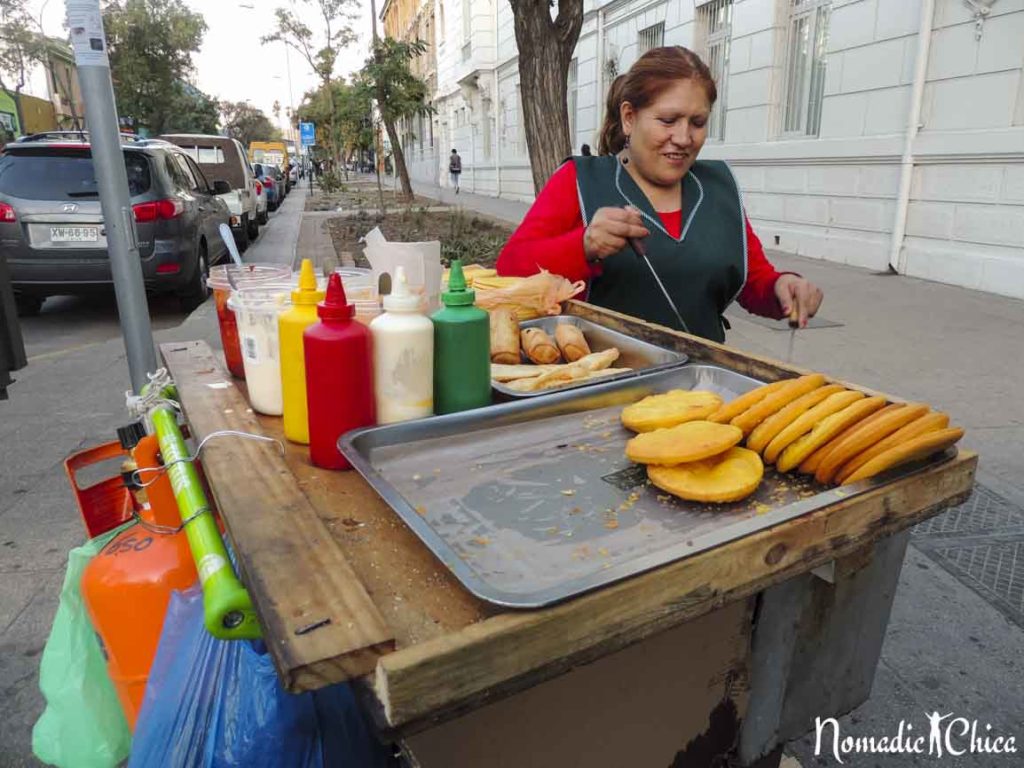
13 Traditional Chilean Street Foods
- Completo: Chile’s answer to the hot dog, the Completo takes street food to new heights with its unique toppings. Imagine a soft bun filled with a plump sausage, then piled high with mashed avocado, diced tomatoes, sauerkraut, and a generous dollop of mayonnaise. The mix of creamy, tangy, and crisp textures, along with the rich, savory flavors, makes every bite a delightful surprise. This isn’t just a snack; it’s a full meal that reflects the heartiness of Chilean cuisine.
- Empanadas: Perhaps the most iconic Chilean street food, empanadas are crispy pastries filled with a variety of ingredients. The most traditional filling is ‘pino’, a mixture of minced meat, onions, olives, and a hard-boiled egg, seasoned with cumin and paprika. Baked to golden perfection, each empanada is a warm, filling treat that encapsulates the rustic and homey flavors of Chile.
- Churrasco: This sandwich is a staple of Chilean street food. It features thinly sliced beef steak on a soft, round bread roll, often accompanied by tomato, mashed avocado, and mayonnaise. The meat is typically marinated in garlic, vinegar, and spices, grilled to tender perfection, and served hot. Churrasco sandwiches offer a satisfying texture and a burst of flavors, making them a favorite among both locals and tourists.
- Sopaipillas: A versatile street food, sopaipillas are pumpkin-infused dough fried until golden and slightly puffed. They can be served sweet, drizzled with molasses, or savory, accompanied by pebre—a spicy cilantro salsa. This dish is particularly popular in the colder months, offering a warm, slightly sweet comfort that perfectly complements the zesty pebre.
- Anticuchos: Originating from the indigenous Quechua people, anticuchos are skewers of marinated meat grilled over open flames. Though traditionally made with beef heart, variations now include chicken, pork, or beef. The marinade—a mix of vinegar, cumin, garlic, and chili—infuses the meat with intense flavors, making anticuchos a favorite at local festivals.
- Ceviche: Chilean ceviche offers a distinct take with its emphasis on simplicity and the freshness of the Pacific Ocean. Typically made from sea bass or halibut, the fish is marinated in lime juice, onions, and cilantro, creating a light, refreshing dish that’s perfect as a summery snack or a palate cleanser.
- Humitas: Similar to Mexican tamales, humitas are made with fresh corn, which is ground and mixed with onion, basil, and butter, then wrapped in corn husks and steamed. They are often served with a side of sugar or salsa, blending sweet and savory in a tender, creamy package.
- Pastel de Choclo: This corn pie is a hearty layer dish that starts with a bottom of pino (meat filling), followed by chicken, olives, and hard-boiled eggs, topped with a sweet corn mixture. Baked until the top is browned, it offers a satisfying mix of sweet and savory, reflecting the agricultural bounty of Chile.
- Mote con Huesillo: On hot summer days, nothing beats mote con huesillo, a traditional Chilean drink and snack. It’s a rehydrating concoction made from cooked husked wheat and dried peaches cooked in a sweet syrup, served cold. This refreshing treat is both a drink and a meal, providing sustenance and relief from the heat.
- Manjar: Found in various forms of street sweets, manjar is Chile’s version of dulce de leche, a creamy caramel spread made from condensed milk. Whether it’s filling churros, layered between cake slices, or simply spread on a warm piece of bread, manjar is a beloved treat that satisfies sweet tooths everywhere.
- Choripan: A simple yet irresistible sandwich, choripan consists of chorizo (spicy sausage) split down the middle, grilled, and served on a crusty roll with pebre. It’s a popular snack at public gatherings, combining spicy, smoky flavors with fresh, herbal notes from the salsa.
- Pebre: While not a food on its own, this Chilean condiment deserves mention. Made from chopped cilantro, onions, garlic, green chili peppers, and tomatoes, pebre is the go-to sauce for spicing up everything from meats to bread. It’s the Chilean equivalent of salsa, bringing freshness and a spicy kick to any dish.
- Calzones Rotos: Translating to “torn underwear,” this quirky-named dessert is anything but ordinary. These sweet, fried pastries are dusted with powdered sugar and often enjoyed as a snack during tea time. Light and airy, they offer a delightful contrast to the more savory street food dishes, ending any food tour on a sweet note.
Each of these foods not only offers a taste of Chilean culture but also tells a story of the country’s rich culinary heritage, inviting you to explore its delicious complexities bite by bite.
Traditional Chilean Street Drinks
Chile’s streets aren’t just a haven for foodies—they’re also a paradise for lovers of unique and refreshing beverages. Here’s a look at some traditional Chilean street drinks that capture the essence of Chile’s vibrant drink culture:
Mote con Huesillo: This is the quintessential Chilean summer drink, deeply rooted in the country’s culinary traditions. It consists of rehydrated dried peaches (huesillos) and cooked husked wheat (mote), served in their own sweet cinnamon-infused syrup. Typically enjoyed ice-cold, it offers a nourishing, refreshing break on warm days, with a sweet, earthy flavor that’s utterly unique.

Terremoto: Translating to “earthquake,” this potent drink will definitely shake things up! It’s a mix of pipeño (a sweet fermented wine) and pineapple ice cream. The result is a creamy, frothy concoction with a kick that can sneak up on you. Often served in a one-liter glass called a “medio” or “cataclysm” for smaller portions, it’s a fun and popular choice during festivals.

Chicha: In Chile, chicha refers to a fermented beverage made either from grapes in the central regions or from apples in the south. This drink dates back to pre-Columbian times and varies significantly in strength and flavor depending on its preparation and aging process. It’s a festive staple, particularly during the Chilean Independence celebrations in September.

Fan-Schop: A refreshing mix of beer and orange soda, fan-schop is a popular choice in local bars and during street festivals. The combination creates a light, fruity beer that’s less alcoholic and sweeter than a traditional brew, making it a pleasant refreshment for those hot Chilean afternoons.
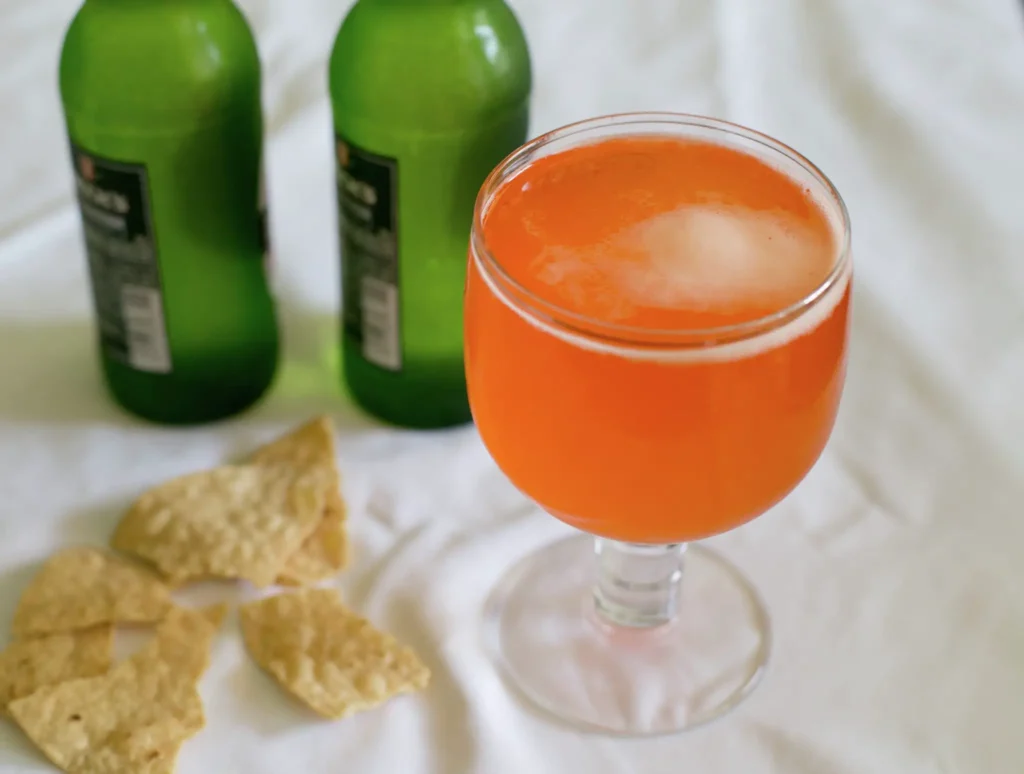
Borgoña: A celebratory drink that combines red wine with chopped strawberries. Borgoña is typically served in a large jug where it’s allowed to macerate to enhance the interaction between the rich flavors of the wine and the fresh, juicy berries. It’s a festive, communal beverage often shared at gatherings and special occasions.

Pisco Sour: Although widely recognized as a cocktail rather than a street drink, Pisco Sour has its roots deeply embedded in Chilean culture. Made with pisco (a grape brandy that both Chile and Peru claim as their national spirit), freshly squeezed lime juice, simple syrup, egg white, and Angostura bitters, this frothy, tangy cocktail is a beloved staple in many bars and eateries across the country.

These drinks not only quench thirst but also immerse you in the rich tapestry of Chilean traditions, each sip a story of the land and its people. Whether you’re cooling down with a Mote con Huesillo or toasting with a vibrant Borgoña, experiencing these beverages is an essential part of exploring Chile’s lively street culture.
Wrapping Up
Chilean street food is a vibrant testament to the country’s rich cultural mosaic, offering a palette of flavors that range from the heartily savory to the delightfully sweet. Each dish and drink not only fills the stomach but also captivates the soul, showcasing the unique and versatile culinary traditions of Chile.
Whether it’s the hearty completeness of a Completo or the refreshing zest of a Mote con Huesillo, these street fares are gateways to experiencing the local life and spirit. I encourage you to dive into these recipes, embrace the adventure in your kitchen, and bring a taste of Chile’s bustling streets to your home.
Disclosure: Our blog contains affiliate links to products. We may receive a commission for purchases made through these links. However, this does not impact our reviews and comparisons. We try our best to keep things fair and balanced, in order to help you make the best choice for you.
